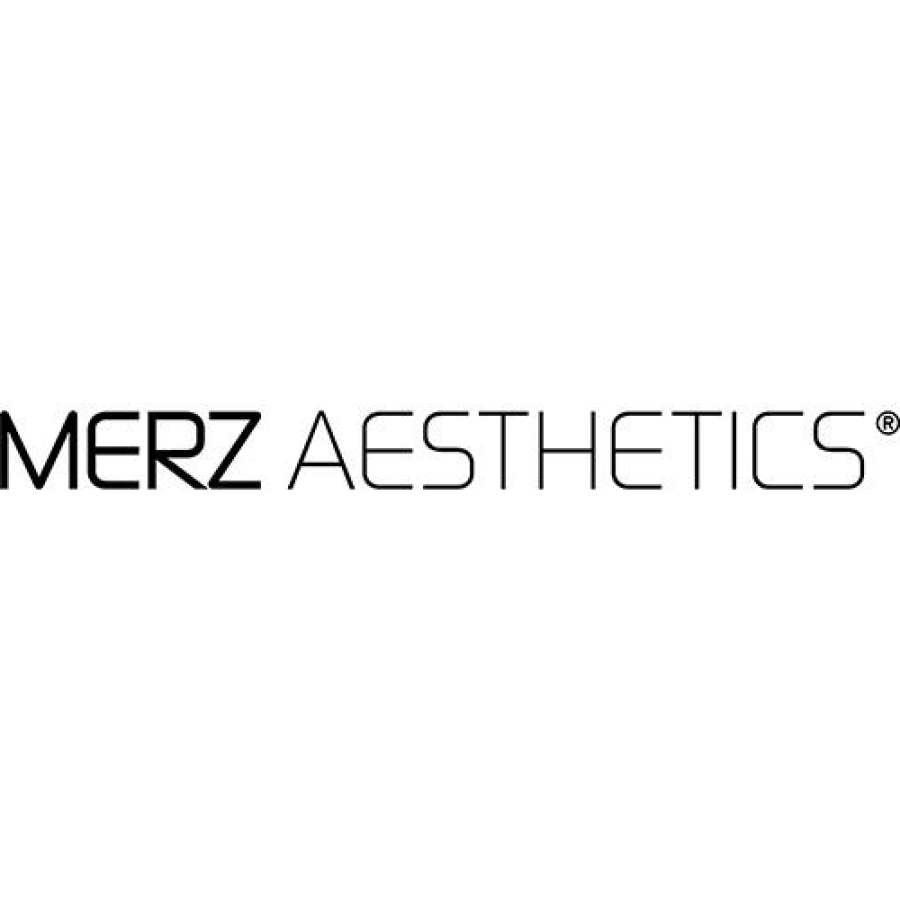
Clinical
Radiofrequency and Non-RF Microneedling Safety: What Patients Should Know
With Molly Muecke, RN, MSN, NP-CMicroneedling is a popular aesthetic treatment offered in 79% of med spas (2024 Medical Spa ...
Posted By Madilyn Moeller, Wednesday, October 25, 2023

By Audra Ford, MD
Taking care of the skin, the largest organ on the human body, bodes well for its appearance and health, which is an indicator of overall well-being. However, skin of color presents unique challenges in terms of analysis and treatment. Skin of color is defined as skin that has a higher melanin content, which can lead to increased risk of pigmentation disorders and other skin conditions. Healthy and even skin tone is a universal desire for people of color. Overall, there are four emergent perceptual categories related to skin: tone evenness, surface evenness, firmness and glow. This is why diversifying our skin analysis is one of the most important foundations of our business.
More than 20 years ago, people had a perception of who the typical medical aesthetic patient was—and, similarly, they had an image of who that patient’s provider was. Over time, as medical aesthetic procedures have grown in popularity, both the patient base and the providers who treat them have continued to evolve.
There is more diversity across the board—in gender, ethnicity, age, and race. Now, aesthetics is mentioned in casual conversations, not in hushed tones in private. However, there is a lot of work that still needs to be done to encourage more inclusion in skin care.
Increased life expectancy and a focus on appearance—especially during the COVID pandemic, when people had to resort to video meetings and chats—have served to drive an increase in the number of nonsurgical cosmetic procedures performed in the last five years.
Demographic shifts in the United States, with increases in diverse populations that seek nonsurgical cosmetic procedures, have resulted in the need for a better understanding of cultural preferences, as well as structural and biological differences in the skin of people of color. Although many advances in cosmeceuticals, cosmetics and photoprotection have addressed the aesthetic needs of and minimized complications in skin of color, gaps still remain in education regarding the appropriate selection and execution of nonsurgical cosmetic procedures in persons of color.
Skin analysis is a crucial step in developing effective treatment plans for people of color at medical spas. Pigmented skin has unique characteristics that require specialized care and attention. For example, individuals with skin of color are more prone to hyperpigmentation, keloids and scarring, which can be exacerbated by certain treatments. At the outset of treatment, if you ask your client about scarring and evaluate their scars, it will help determine end goals and favorable outcomes.
Additionally, skin of color is more sensitive to certain skin care products, such as those containing alpha-hydroxy acids or retinoids, which can cause irritation or hyperpigmentation. It is important for clinicians to be aware of these differences and take them into account during skin analysis. Therefore, conducting a thorough skin analysis is essential to identify any potential risks and complications associated with specific treatments.
There are several methods of skin analysis that can be used for skin of color. Visual inspection and skin typing are commonly used to assess the skin’s color, texture, firmness, laxity, blemishes, discolorations and other physical characteristics. Dermatological imaging technologies, such as dermoscopy and reflectance confocal microscopy, can provide more detailed information about the skin’s structure and pigmentation. Biopsy and laboratory analysis may also be necessary to diagnose certain skin conditions, such as skin cancer or autoimmune disorders. It is important to use a combination of these methods to obtain a comprehensive understanding of the skin’s condition.
Medical spas also can evaluate the genealogy of each client. Asking about the background of the patient is key when you are unsure of what setting to use. Despite what people look like, they may have ancestry that shows darker-skinned grandparents, and that will require adjustments to all products used. Peels would have to be a bit milder to prevent hyper- or hypopigmentation. Laser settings would have to be adjusted for skin types 4, 5 or 6. Test spots are highly recommended for patients to ensure that they will not have a reaction to treatments.
Providers should evaluate and, more importantly, anticipate what the desired outcome is. Even when it comes to injectables, you must ensure that you are using the right needles and pressure to ensure that you do not leave marks or blemishes on the skin.
Even the detail of asking what pronouns people prefer helps you better connect with your patient. You can then ask them what they think is beautiful, because what they see as beauty can, may or will differ from that of the clinician. Finding out more about their background is key. Are they here because of personal reasons, or did someone point something out to them about their body? It is important to ensure that the patient is not presenting with a form of body dysmorphic disorder. You do not want someone to push their body to the limit in an unhealthy way.
We as practitioners must dismantle rigid notions of how people think they should look by helping patients highlight what they like and making those features shine through. Also, you should compliment the patient on a body part as you are conducting the assessment.
Another tip is to network and connect with colleagues who work with a variety of skin complexions, which will enhance your skills and comfort levels with skin of color. Many areas of the world have clients with blended nationalities, darker skin and other distinctive traits. Along with networking, seek forums online and speak to vendors about recruiting models who are willing to work with you as you expand your knowledge base.

Ultimately, skin analysis is an essential step in developing effective treatment plans for people with skin of color at medical spas. By identifying the unique characteristics of an individual’s skin, medical spa professionals can create customized treatment plans that address their specific needs and concerns. This not only helps to ensure optimal treatment outcomes, but also enhances the professional credibility of the medical spa by demonstrating a commitment to providing personalized care. With the help of skin analysis, medical spas can provide high-quality skin care services that meet the unique needs of people with skin of color.
In conclusion, skin analysis is an essential component of skin care for individuals with skin of color. By understanding the unique characteristics of your client and using appropriate analysis methods, clinicians can provide accurate diagnosis and tailored treatment plans. Proper skin analysis can help prevent and treat skin conditions, improve overall skin health and prevent long-term damage. It is important for clinicians to be aware of the differences in skin of color and take them into account during analysis and treatment.
Cash, C., Hartman, C. and Hopes, S. (2020) Why diversity is important in medical aesthetics-and how to make a difference, Spark. Available at: https://www.yourspark.com/medical-aesthetics/a4l6f000000mm8kaaa (Accessed: November 27, 2022).
Common Dermatologic Procedures and the Associated .... (n.d.) Retrieved June 1, 2023, from pubmed.ncbi.nlm.nih.gov/34328287/
Kirwan, L. (2018) Treatment based, multi-specialty skin classification system: Guidelines for assessing skin response to cosmetic treatments: Semantic scholar, semanticscholar.org. Available at: https:// http://www.semanticscholar.org/paper/Treatmentbased%2C-multi-specialty-skin-system%3A-forKirwan/6591fc132ef8ec554ee24e3189da87e74ba77ce0 (Accessed: November 27, 2022).
Montes, J.R. (2019) Understanding the female Hispanic and Latino American facial aesthetic patient, José Raul Montes MD. Available at: https://jrmontes.com/understanding-the-female-hispanic-and-latino-american-facial-aesthetic-patient/ (Accessed: November 27, 2022).
Palmer, V. (2020) Diversity in aesthetics: Dr Ifeoma Ejikeme, Glowday. Available at: https://www.glowday.com/blog/diversity-in-aesthetics-dr-ifeoma-ejikeme (Accessed: November 27, 2022).
Phillips, T.L. (2022) Diverse perspectives in medical aesthetics matter more than ever, Dermatology Times. Dermatology Times. Available at: https://www.dermatologytimes.com/view/diverse-perspectives-in-medical-aesthetics-matter-more-than-ever (Accessed: November 27, 2022).
Quiñonez, R.L. et al. (2022) An update on cosmetic procedures in people of color. Part 1: Scientific background, assessment, preprocedure preparation, jaad.org. Available at: https://www.jaad.org/article/S0190-9622(22)00095-0/fulltext (Accessed: November 27, 2022).
Rodgers, R.F., McLean, S.A. and Paxton, S.J. (2015) Longitudinal relationships among internalization of the media ideal, peer social comparison, and body dissatisfaction: Implications for the tripartite influence model., American Psychological Association. American Psychological Association. Available at: https://psycnet.apa.org/doiLanding?doi=10.1037%2Fdev0000013 (Accessed: November 27, 2022).
Samizadeh, S. (2019) The ideals of facial beauty among Chinese aesthetic practitioners: Results from a large national survey, Aesthetic plastic surgery. U.S. National Library of Medicine. Available at: https://www.ncbi.nlm.nih.gov/pmc/articles/PMC6345732/ (Accessed: November 27, 2022).
Skin of color: a basic outline of unique differences. (n.d.) Retrieved June 1, 2023, from pubmed.ncbi.nlm.nih.gov/23559162/
Tylka, T.L. (2011) Refinement of the tripartite influence model for men: Dual body image pathways to body change behaviors, Body Image. Elsevier. Available at: https://www.sciencedirect.com/science/article/abs/pii/S1740144511000532. (Accessed: November 27, 2022).
The Treatment of Skin of Color. (n.d.) Retrieved June 1, 2023, from www.skininc.com
Walker, C.E. et al. (2019) Effects of social media use on desire for cosmetic surgery among young women - current psychology, SpringerLink. Springer US. Available at: https://link.springer.com/article/10.1007/s12144-019-00282-1 (Accessed: November 27, 2022).
Audra Ford, MD, is a board-certified family medicine physician. She is a native of Tuskegee, Alabama, and currently serves as a medical director for several medical spas in the Greater Los Angeles area. For more than 20 years, she has worked with the military, in private practice, in hospice, and serving as a medical director for urgent care facilities on the East and West Coasts. She emphasizes with her staff how to do a proper skin consultation.
AmSpa Members receive QP every quarter. Learn how to become a member and make your med spa the next aesthetic success story.
Related Tags
Medical spa news, blogs and updates sent directly to your inbox.

Clinical
With Molly Muecke, RN, MSN, NP-CMicroneedling is a popular aesthetic treatment offered in 79% of med spas (2024 Medical Spa ...

Clinical
On November 5, 2025, Merz Aesthetics announced that Ultherapy PRIME® gained U.S. Food and Drug Administration (FDA) clearance to improve ...

Clinical
By Belmar Pharma SolutionsWhen it comes to menopause, a once-taboo topic, the tide has finally changed. Women now have access ...

Clinical
The FDA’s recent safety communication regarding radiofrequency (RF) microneedling devices is a critical reminder: Aesthetic treatments involving energy-based devices are ...